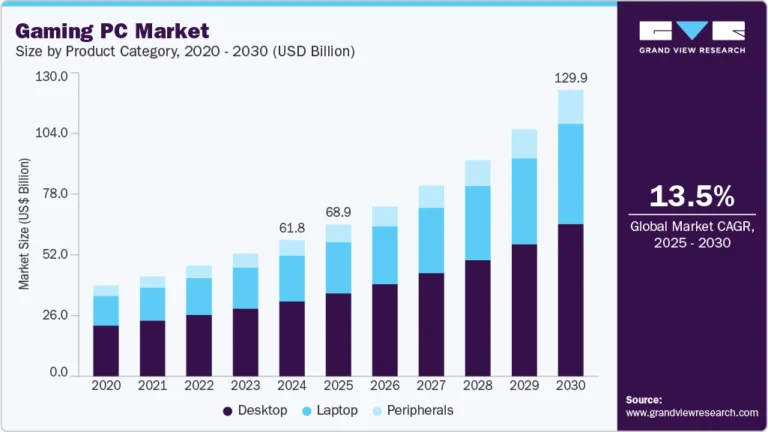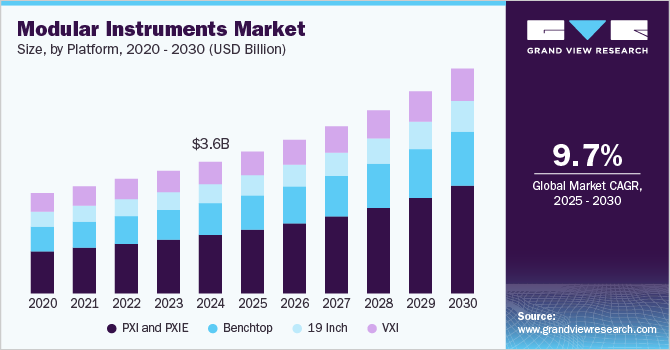Copper Wire Market Size, Share & Trend Analysis growing at a CAGR of 6.6% from 2025 to 2030

The global copper wire market size was estimated at USD 149.12 billion in 2024 and is projected to reach USD 210.79 billion by 2030, growing at a CAGR of 6.6% from 2025 to 2030. The copper wire market is growing rapidly due to the global shift toward renewable energy.
Key Market Trends & Insights
- Asia Pacific held 74.3% revenue share of the global copper wire market.
- By voltage, the low voltage segment held the largest market revenue share of over 51.0% in 2024
- By application the, building wire segment held the revenue share of 37.3% in 2024.
- By application the, renewable energy segment is anticipated to register the fastest CAGR over the forecast period
Market Size & Forecast
- 2024 Market Size: USD 149.12 Billion
- 2030 Projected Market Size: USD 210.79 Billion
- CAGR (2025-2030): 6.6%
- Asia Pacific: Largest market in 2024
Request a free sample copy or view report summary: https://www.grandviewresearch.com/industry-analysis/copper-wire-market-report/request/rs1
Solar panels and wind turbines need a lot of copper wiring to function efficiently, especially for transmitting electricity from the source to the grid. This demand is rising as countries invest more in clean energy to reduce their carbon emissions and become less dependent on fossil fuels.
The global copper wire market is witnessing robust growth driven by its indispensable role in the electrical and electronics industry. As the backbone of electrical conductivity, copper wires are used extensively in power transmission, distribution systems, circuit wiring, and various electronic devices. The surging demand for consumer electronics, including smartphones, tablets, and home appliances, is fueling the consumption of copper wires. In addition, the growth in global data centers and increasing digitalization further propel demand, as copper wires form critical components in network infrastructure and high-performance servers.
Rapid urbanization and infrastructure development in emerging economies such as India, China, and Southeast Asia are major contributors to copper wire market expansion. These regions are experiencing significant investments in smart cities, transportation networks, commercial buildings, and industrial parks. Government-led initiatives focusing on rural electrification and grid expansion projects stimulate demand for copper conductors. Moreover, copper’s reliability, longevity, and superior conductivity make it the preferred material in overhead and underground power cables used in large-scale infrastructure projects.
The transition toward renewable energy sources is another powerful growth catalyst. Solar power systems, wind turbines, and energy storage units require extensive copper wiring for efficient power generation and transmission. With global climate goals pushing for renewable integration, copper wire is increasingly critical in connecting energy production units to the main grid and ensuring minimal energy losses. Furthermore, as smart grid technologies and energy-efficient solutions gain traction, advanced copper wiring systems are required for grid modernization and load management.
Electric vehicles (EVs) represent a fast-emerging application segment for copper wires, significantly boosting market prospects. Due to its high conductivity and thermal performance, copper is used extensively in EV motors, batteries, inverters, and charging infrastructure. The proliferation of EV manufacturing and the rollout of EV charging stations across North America, Europe, and Asia are creating substantial new avenues for copper wire consumption. As the world shifts toward electrified transportation, this trend is expected to become a long-term driver of copper wire demand.
Drivers, Opportunities & Restraints
The primary drivers of the copper wire market include increasing demand for electricity, rapid urbanization, and growth in the electrical and electronics sectors. Copper wires are widely used in power transmission and distribution due to their excellent conductivity and durability. In addition, rising adoption of EVs and renewable energy sources such as solar and wind power fuel demand for copper wires used in motors, inverters, transformers, and energy storage systems. Government-backed infrastructure projects and smart grid modernization efforts across the globe also contribute significantly to market growth.
The growing trend of digital transformation and the expansion of data centers offer substantial opportunities for the copper wire market. As industries and households shift toward connected devices and automation, the need for high-quality wiring systems increases. Emerging economies in Asia Pacific, Latin America, and Africa present untapped markets due to ongoing electrification efforts and increasing investment in industrial and residential construction. In addition, technological advancements in insulated and heat-resistant copper wire materials allow manufacturers to cater to specialized applications, such as aerospace, high-performance computing, and smart buildings.
Despite its strong growth outlook, the copper wire market faces restraints such as price volatility in raw copper, which directly affects production costs and profit margins. In addition, the increasing popularity of alternative conductive materials, such as aluminum, especially in cost-sensitive applications, poses a challenge. Environmental concerns and regulatory pressures associated with copper mining and refining processes may also hamper market growth.





